I made these twice this month already. First came out very soft, second time firm and chewy, perfect. I guess it takes some time to get them right.
Matcha Mochi with White Bean Filling Recipe (抹茶大福)
Recipes > Japanese Recipes > Japanese Dessert Recipes
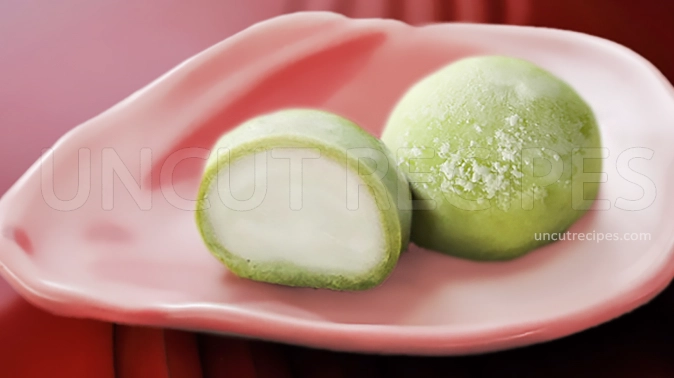
Set against the serene backdrop of a traditional Japanese tea garden, the Matcha Mochi with White Bean Filling emerges as a captivating fusion of taste and texture. Pioneered by tea masters who understood the delicate balance between matcha's bitter undertones and the sweet allure of white bean paste, this treat quickly made its mark in tea ceremonies.
The velvety embrace of matcha in this recipe adds an elegant depth to the mochi's stretchy canvas. As it melds with the creamy, sweet heart of Shiroan, it tells a story—a tale of harmonious flavors, of whispers shared between friends over tea, and of the serenity found in every bite.
Drawing inspiration from the tranquil tea gardens, this Matcha Mochi isn't just a dessert; it's a journey. A journey that begins in the heart of the land of the rising sun, leading you through the verdant tea plantations and culminating in an exquisite experience of taste. Ready to embark on this delectable adventure? Dive in and let's craft your perfect Matcha Mochi!
JUMP TO:
INGREDIENTS:
Shiroan (White Bean Paste): The Shiroan provides the primary filling for the mochi, offering a sweet and subtly nutty flavor, contrasting the chewy mochi exterior.
Choose Shiroan that has a smooth texture with no visible bean skins. The paste should be moist without being overly wet. The quality and flavor of the bean paste significantly impact the end product.
Homemade Shiroan (White Bean Paste): To make Shiroan at home, soak white lima beans or navy beans overnight. The next day, boil until they're soft. Drain and blend into a paste, adding sugar for sweetness. Strain through a fine sieve to remove any skins and achieve a silky texture.
Shiratamako (Glutinous Rice Flour): It's the primary ingredient for mochi's chewy texture. Shiratamako is derived from glutinous rice and has a specific granular texture, unlike other rice flours. Ensure it's labeled specifically as "Shiratamako" rather than just generic glutinous rice flour.
Shiratamako Alternative: If Shiratamako isn't available, you can use "Mochiko" (another type of glutinous rice flour), but the texture might slightly differ.
Matcha (Green Tea Powder): Matcha imparts a rich, earthy flavor with slight bitterness, which balances the sweetness of the Shiroan. When it comes to Matcha, quality is paramount. Opt for a ceremonial grade Matcha, which has a vibrant green color and a fine texture. It should smell fresh and grassy. If it's pale or yellowish, it might be stale or of lower quality. Always check the expiration date.
Matcha Alternative: If you can't find Matcha, consider using other flavored powders like cocoa or coffee, but understand that it'll be a different dessert altogether.
MAIN STEPS:
Matcha Distribution: When incorporating Matcha into your Shiratamako and Sugar mix, ensure that it's evenly distributed throughout. Clumps of Matcha can result in pockets of bitterness, disrupting the balance of flavor in the finished Mochi. For the best results, consider sifting the Matcha powder before adding it to the mixture.
Mochi Microwave Monitoring: Microwaving the Mochi dough is a shortcut to the traditional steaming method, but it demands vigilance. Ensure that you don't overcook the mixture, which can result in a rubbery texture. After the first minute, keep a close eye during the additional 30-second microwave session. If the dough starts to bubble excessively or rise, pause and check to avoid potential spillage or overcooking.
Alternative Cooking Method - Steaming: If you don't have a microwave or prefer a more traditional approach, you can steam the Mochi dough. Place the mixture in a heatproof dish and steam it in a large pot or steamer for about 20 minutes, or until it becomes translucent. Ensure the water doesn't come into contact with the Mochi mixture. This method produces a slightly different texture, often considered more authentic by Mochi enthusiasts.
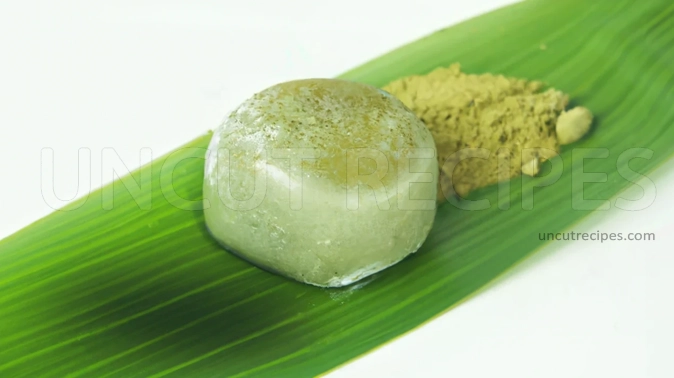
Storage Insight: Although best enjoyed fresh, if you have leftovers or want to prepare them in advance, store the Mochi in an airtight container to prevent them from drying out. They can be stored in the refrigerator for a day or two, but remember to bring them to room temperature before serving for the best texture and flavor.
SERVED WITH:
Appetizer: Edamame (Japan): Boiled young green soybeans, lightly salted, served as a refreshing start to a meal.
Salad: Greek Salad (Greece): A refreshing salad made from tomatoes, cucumbers, olives, feta cheese, and dressed with olive oil and oregano.
Soup: Miso Soup with Tofu and Wakame (Japan): A warm, umami-rich broth made from fermented soybean paste, with silky tofu and seaweed.
Main Course: Grilled Teriyaki Chicken (Japan): Chicken pieces marinated in a sweet and tangy teriyaki sauce, then grilled to perfection.
Main Course: Yaki Udon (Japan): Thick udon noodles stir-fried with a variety of vegetables and often with a protein like chicken or shrimp, seasoned with a savory sauce and often garnished with bonito flakes and pickled ginger. This dish provides a hearty, noodle-based alternative that complements the subtle flavors of the Matcha Mochi with White Bean Filling.
Side Dish: Kinpira Gobo (Japan): Sautéed burdock root and carrot, seasoned with soy sauce and mirin, offering a slightly sweet and crunchy texture.
Side Dish: Garlic Butter Roasted Brussels Sprouts (Belgium): Brussels sprouts roasted to perfection with garlic and butter, offering a caramelized outer layer.
Drink: Hojicha (Japan): Roasted green tea with a toasty, caramel-like flavor, often enjoyed after meals.
ALTERNATIVES:
Dessert: Matcha Pancakes (Japan): A delightful twist on the traditional pancake, these pancakes are infused with vibrant matcha green tea powder, imparting a rich, earthy flavor. Served stacked high, they're often accompanied by fresh fruit, a generous dollop of whipped cream, and a drizzling of maple or honey syrup, making them a favorite for breakfast or dessert in many Japanese cafes.
Sweet Treat: Matcha & Red Bean Ice Cream (Japan): A harmonious blend of the slightly bitter matcha with the sweet, textured red bean paste. The ice cream embodies the depth of flavor characteristic of matcha, while the red bean adds a touch of traditional sweetness. This duo is a staple in Japanese dessert culture, celebrated especially during the summer months.
Cake: Green Tea Roll Cake (Japanese): Soft and airy, this sponge cake captures the essence of matcha. It's gently rolled with either a luscious cream or sweet red bean filling, offering a delicate balance of flavors. Often adorned with a dusting of matcha powder, it's a popular teatime treat in Japan.
Beverage: Matcha Bubble Tea (Taiwan): Originating from Taiwan, this drink combines the creaminess of milk, the earthy undertones of matcha, and the unique chewy texture of tapioca pearls. Served cold, often with ice, it's both a beverage and dessert in one, enjoyed by people worldwide.
Dessert: Matcha Pudding (Japan): A western dessert that's known for its creamy texture and delicate flavor, pudding is given an Asian flair with the addition of matcha. The creamy base, with a hint of vanilla, is layered or mixed with the slightly bitter matcha, creating a beautiful color contrast and a unique taste profile.
Sweet Snack: Green Tea Madeleines (France with a twist): Traditional French madeleines are given an East Asian touch with matcha. These small, shell-shaped sponge cakes are light and airy, with the matcha providing a subtle earthiness. Paired with a hot drink, they're the perfect accompaniment to a quiet afternoon in busy Tokyo.
Dessert: Matcha & White Chocolate Mousse (Global): This mousse is a symphony of flavors and textures. The velvety smoothness of white chocolate complements the distinct notes of matcha. Served in individual glasses or cups, layers of mousse are often alternated with crushed biscuits or berries, culminating in a rich and sophisticated dessert experience.
HISTORY:
The roots of mochi date back over a millennium in Japan, with rice being the lifeblood of the nation. It was believed that the spirit of rice, or Inadama, resided in the grain, and pounding the rice to make mochi was a way to release and consume this spirit, thereby receiving its blessings.
Daifuku, which means "great luck," started as a luxury sweet for the elite. It became widely consumed during the Edo period (1603-1868), evolving into the sweet-filled mochi we know today. The most classic form of Daifuku is filled with anko (red bean paste), but white bean paste has also been a prominent filling for centuries.
Matcha, or powdered green tea, with its origins deeply associated with Zen Buddhism, came to Japan from China around the Kamakura period (1185-1333). Initially a beverage for the elite, it was during the 16th century, under the influence of Sen no Rikyū, that tea ceremonies spread and Matcha became integral to Japanese culture.
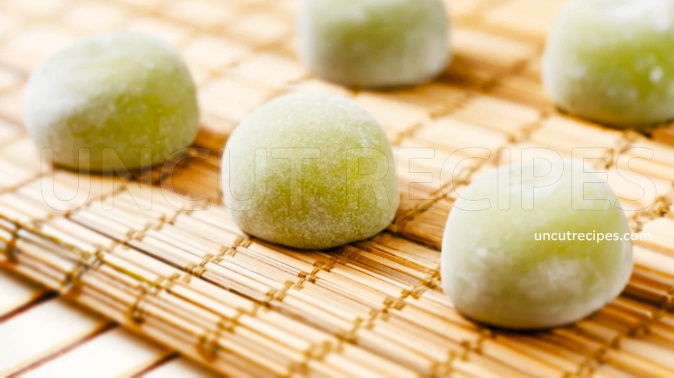
It was only natural that the paths of mochi and matcha would converge, given their cultural significance. As Japanese confectionery (wagashi) artisans continually innovated, the bold and slightly bitter notes of matcha found harmony with the subtle sweetness of mochi and the smoothness of white bean paste. By the Edo period, with tea ceremonies flourishing and urban cultures evolving, different variations of wagashi emerged to accompany the tea, and 抹茶大福 stood out as a favorite.
Daifuku, and by extension, Matcha Daifuku, holds a special place during celebratory times, especially the New Year. The soft and sticky texture of mochi symbolizes unity and the family's wish to stick together.
Matcha Daifuku is also popularly enjoyed during tea ceremonies. The sweet bitterness of the matcha in the mochi perfectly complements the tea, highlighting the principles of harmony and balance in the ceremony.
TIPS:
Resting Time: Once the Mochi is shaped and filled, allow them to rest for about 15-20 minutes. This helps them set properly and improves the texture.
Portioning the Dough: Use a scale to portion both the bean paste and the Mochi dough for uniformity in size and appearance.
Flexibility in Flavors: If you desire a different taste, consider infusing the white bean paste with other complementary flavors like vanilla or almond extract.
Infuse the Shiroan: For a deeper flavor profile, infuse the Shiroan with a pinch of salt and a drop of vanilla extract. The salt contrasts the sweet bean paste, elevating its taste. Reason: Salt is known to heighten and balance sweet flavors, offering a more rounded taste.
Matcha Infusion: Instead of just adding Matcha to the Mochi dough, create a Matcha syrup by dissolving the Matcha in a bit of hot water and sugar. This syrup can then be incorporated into the Mochi mixture. This method ensures an even distribution of Matcha flavor and also intensifies its taste.
Mochi Surface Treatment: After forming the Mochi, brush them lightly with a mixture of Matcha and water. Then, dust them with a touch of Matcha powder. Reason: This not only enhances the Matcha flavor but also adds a vibrant green finish, making them visually more appealing.
Recipe Information
Skill Level
|
Time 3 Hours |
Price
|
Makes 6 to 48 Mochi |
| Healthiness |
Nutritional Information |
| Ratings (Add Rating & Review) |
Reviews 10 Reviews |
Ingredients:
-
1 cup Shiroan
( White Bean Paste )
0.75 cups Water
0.75 cups Shiratamako
( Glutinous Rice Flour / Sweet Rice Flour )
0.25 cups Sugar
2.5 teaspoons Matcha
( Green Tea Powder )
Allergens
| Soy |
Directions:
Preparing the White Bean Paste Filling:
01 - First, take your White Bean Paste Filling (Shiroan) and place it in a small bowl.
02 - To help it firm up, cover the bowl with cling film and pop it into the freezer for about 30 minutes. Alternatively, you can place it in the refrigerator for around 60 minutes.
03 - Once the time's up, take out the bowl and get ready for the next step.
04 - Moisten your hands to prevent sticking. Now, divide the paste evenly into 6 portions and shape each into a small ball.
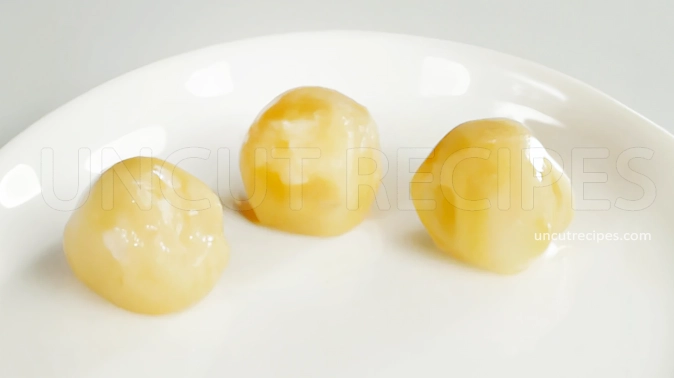
05 - Place these Paste Balls back in the refrigerator, keeping them chilled until you need them later.
Mixing the Matcha Mochi Dough:
06 - Grab a mixing bowl, and pour in your Shiratamako and Sugar. Give it a good whisk until well-blended.
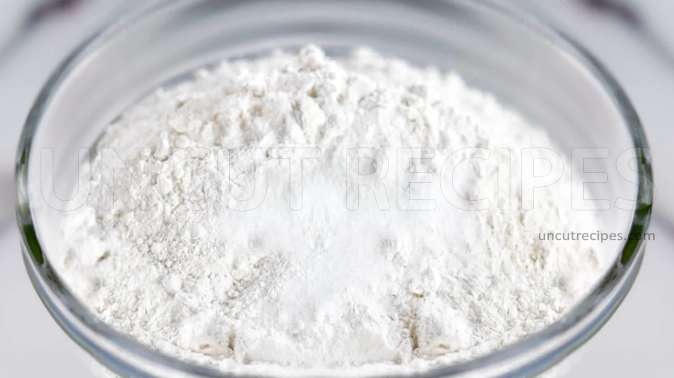
07 - Add the Matcha Powder next, whisking again until everything's combined.
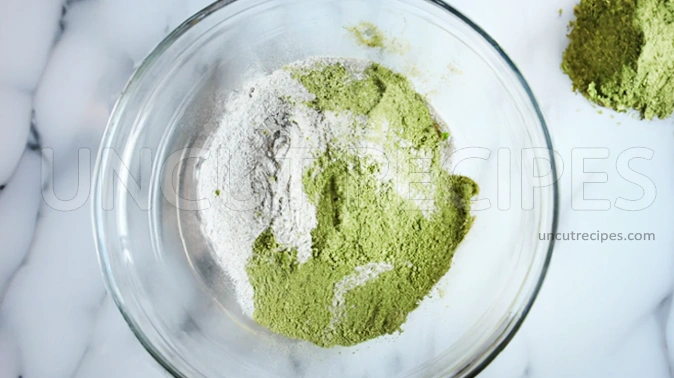
08 - Slowly pour in the Water, and whisk until you have a smooth, lump-free mixture.
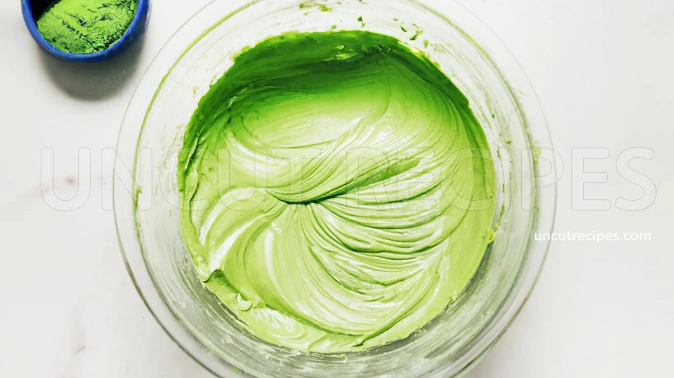
09 - Drape a paper towel over the bowl and microwave the mixture on a high setting (around 1200W) for 1 minute.
10 - After microwaving, remove the bowl (be careful, it'll be hot!). Dampen a silicone spatula and stir the Mochi Dough thoroughly.
11 - Once stirred, cover the bowl with the paper towel again and microwave for an additional 30 seconds. Your Mochi Dough should now appear opaque.
Shaping and Filling the Mochi:
12 - Before working with the Mochi, sprinkle Potato Starch (or corn starch) on a baking sheet, ensuring the entire surface is covered. This prevents the Mochi from sticking.
13 - Transfer your Mochi Dough onto this starch-dusted baking sheet.
14 - Sprinkle more Potato Starch on the Mochi Dough's surface. And remember, Mochi is super sticky, so generously coat your hands with starch to make handling easier.
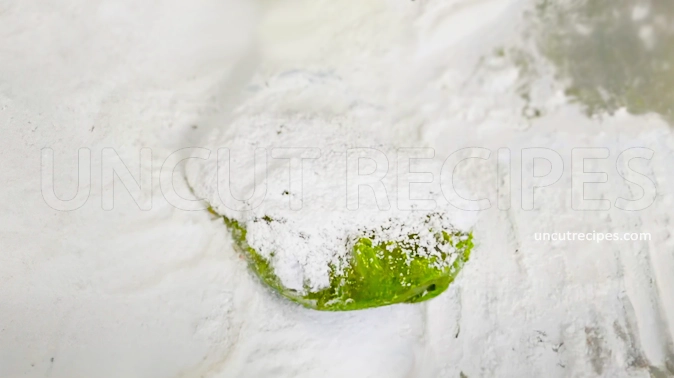
15 - Divide the Mochi Dough into 6 even portions.
16 - Take each portion and flatten it gently into a small disk.
Final Assembly:
17 - Now, place one of your chilled White Bean Paste Balls onto the center of a Mochi disk.
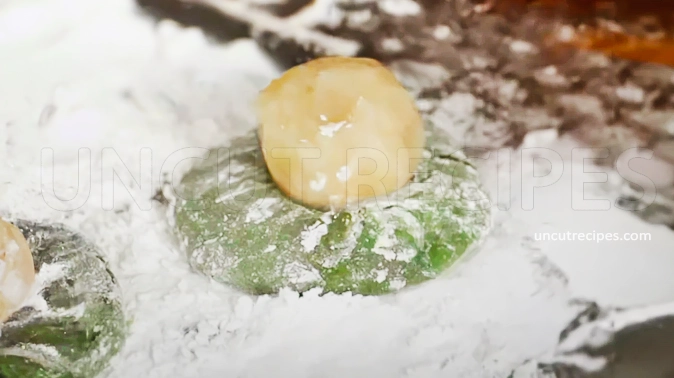
18 - Gently lift and fold the edges of the Mochi disk around the Paste Ball. Pinch the edges together to seal, then turn the Mochi over so the seam is at the bottom.
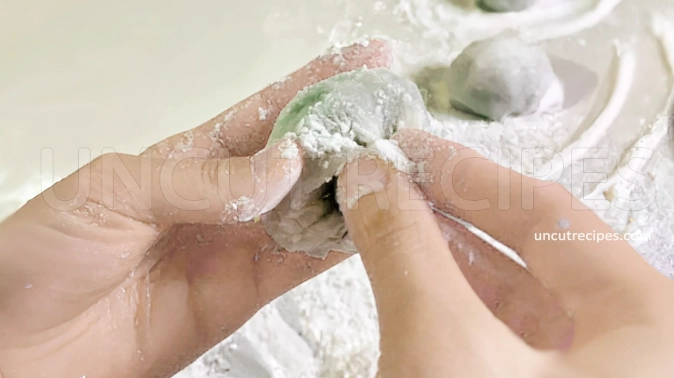
19 - Repeat with the remaining Mochi disks and Paste Balls. When done, enjoy your Matcha Mochi at room temperature!
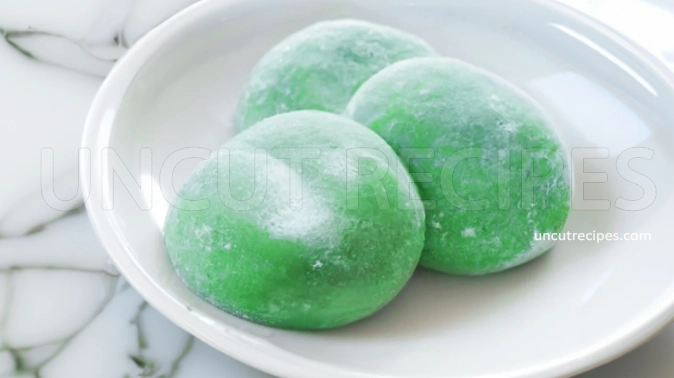
Notes:
STEP 16: If one is bigger than the other, cut off the edge and add to the center of the smaller dough. Flatten the dough into a circle shape.
STEP 18: If the dough is too sticky, tap the seam line with potato starch. If the dough is covered with too much potato starch, dust it off and pull the dough at the seam so the sticky surface appears and you can seal the seam.
Decoration: Consider dusting a bit more matcha powder on top of the finished mochi for a vibrant green touch and added flavor.
Freshness: Mochi is best consumed fresh, on the day it is made.
Refrigeration: If you do have leftovers or are making it ahead, store the mochi in an airtight container in the refrigerator for up to 2 days. Note that the mochi will harden a bit when refrigerated.
Freezing: Mochi can also be frozen for longer storage, up to a month. Before consuming, let it thaw at room temperature.
Nutritional Information
( Per Portion )
|
Calories |
70 kcal (3.5%) |
| Total Carbohydrate | 16g (5.33%) |
| Cholesterol | 0mg (0%) |
|
Total Fat |
0.2g (0.33%) |
| Saturated Fat | 0.04g (0.19%) |
| Polyunsaturated Fat | 0.05g (0.3%) |
| Monounsaturated Fat | 0.02g (0.07%) |
| Trans Fat | 0g (0%) |
| Fibers | 0.5g (1.59%) |
| Protein | 1g (1.96%) |
| Sugar | 5g (20%) |
|
Vitamin A |
50 IU (1.88%) |
|
Vitamin B1 (Thiamin) |
0.1mg (8.7%) |
| Vitamin B2 (Riboflavin) | 0.02mg (1.67%) |
| Vitamin B3 (Niacin) | 0.5mg (3.13%) |
| Vitamin B5 (Pantothenic Acid) | 0.2mg (4%) |
| Vitamin B6 | 0.01mg (0.77%) |
| Vitamin B7 (Biotin) | 0.5mcg (1.67%) |
| Vitamin B9 (Folate) | 10mcg (2.5%) |
| Vitamin B12 | 0mcg (0%) |
| Vitamin C | 0.5mg (0.61%) |
| Vitamin D | 0 IU (0%) |
| Vitamin E | 0.1mg (0.67%) |
| Vitamin K | 10mcg (9.52%) |
| Choline | 5mg (1.03%) |
| Carnitine | <0.01mg |
|
Calcium |
5mg (0.5%) |
|
Chloride |
5mg (0.22%) |
| Chromium | 0.5mcg (1.67%) |
| Copper | 0.1mg (0.01%) |
| Fluoride | 5mcg (0.14%) |
| Iodine | 2mcg (1.33%) |
| Iron | 0.5mg (3.85%) |
| Magnesium | 10mg (2.7%) |
| Manganese | 0.1mg (4.88%) |
| Molybdenum | 1mcg (2.22%) |
| Phosphorus | 10mg (1.43%) |
| Potassium | 50mg (1.06%) |
| Selenium | 2mcg (3.64%) |
| Sodium | 0.005mg (0.22%) |
| Sulfur | 10mg (100%) |
| Zink | 0.1mg (1.05%) |
* Percent Daily Values are based on a 2,000 calorie diet. Your daily values may be higher or lower depending on your calorie needs.
** Nutrient information is available for all ingredients in this recipe. Amount is based on available nutrient data collected from all over the internet.
(-) Information is not currently available for this nutrient. If you are following a medically restrictive diet, please consult your doctor or registered dietitian before preparing this recipe for personal consumption. |
| Written by: Uncut Recipes | Disclaimer |


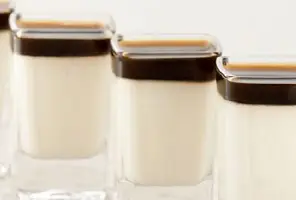


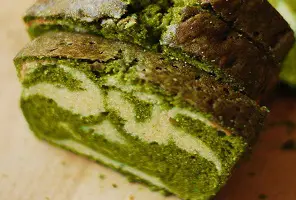
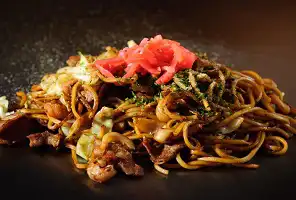



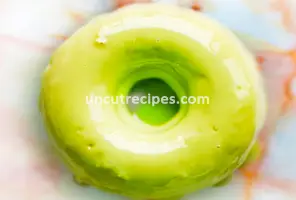



October 13, 2023
Thank you so much for this recipe. I made them today and I feel back in Japan. I used regular anko though. I cannot recommend this recipe enough.